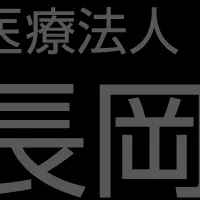
Transforming Breast Cancer Detection with AI: SimonMed Collaborates with Lunit
Transforming Breast Cancer Detection with AI: SimonMed Collaborates with Lunit
In a groundbreaking development for breast cancer screening, SimonMed Imaging®, a prominent outpatient medical imaging provider in the United States, has announced its partnership with Lunit. This collaboration aims to introduce AI-driven solutions that promise enhanced accuracy in breast cancer detection, marking a significant advancement in diagnostic technology.
SimonMed has chosen the Lunit INSIGHT DBT™ as part of its cutting-edge platform for Personalized Breast Cancer Detection (PBCD). This AI solution has been selected after thorough evaluation, highlighting its superiority in performance, speed, and clinical validation. With this integration, SimonMed aims to offer a screening experience tailored to each patient, driven by precise data analytics and AI technologies.
Dr. Sean Raj, Chief Innovation Officer at SimonMed, emphasized the importance of this partnership for patient health. He stated, "This is more than just an upgrade—it's an important step forward for our patients’ health. Lunit’s technology allows us to provide the most precise and personalized mammogram experience to date. Together with our board-certified breast radiologists, we believe this will set a new benchmark in breast cancer screening."
The Lunit INSIGHT DBT technology is trained on millions of mammogram images and is designed to detect even the slightest indicators of breast cancer. This capability helps improve both the sensitivity and specificity of screenings, ensuring that potential issues can be addressed swiftly and effectively. By integrating this advanced AI within its expansive network of over 170 accredited centers, SimonMed is set to enhance the efficiency of breast cancer diagnostics, providing faster turnaround times and actionable insights for patients.
Dr. John Simon, Founder and CEO of SimonMed Imaging, expressed his commitment to innovative patient care, commenting, "This advanced AI solution exemplifies our dedication to offering accurate, affordable, and proactive healthcare. We are on the front line of transforming breast cancer detection—this technology empowers us to save lives through early detection."
The partnership extends beyond AI; it represents a shift toward a more data-informed, patient-centric approach in healthcare. Craig Hadfield, CEO of Volpara Health—a subsidiary of Lunit contributing to this partnership—remarked, "SimonMed is leading by example in the transformation of care. This collaboration sets a new standard for high-quality breast screenings that are empirical, focused on the patient, and anchored in clinical precision."
SimonMed Imaging, headquartered in Scottsdale, Arizona, operates approximately 170 sites across 11 states, employing over 200 radiologists skilled in subspecialty areas. The company prides itself on utilizing the latest diagnostic imaging technologies while prioritizing accessibility and affordability. Alongside this partnership with Lunit, SimonMed continues to spearhead initiatives in personalized medicine through its simonONE division, improving early diagnosis and treatment outcomes for various health conditions.
For patients and healthcare providers looking for detailed information about SimonMed’s Personalized Breast Cancer Detection services, they can visit simonmed.com. This collaboration not only showcases the potent capabilities of AI in improving healthcare outcomes but also exemplifies how innovation can foster a healthier future for patients across the United States.
In summary, the partnership between SimonMed Imaging and Lunit heralds a new era in breast cancer detection, combining advanced AI technologies with clinical expertise to enhance the screening process. As this collaboration unfolds, it stands as a testament to the power of innovation in healthcare, aimed at improving patient outcomes through precise and timely detection of breast cancer.
Topics Health)










【About Using Articles】
You can freely use the title and article content by linking to the page where the article is posted.
※ Images cannot be used.
【About Links】
Links are free to use.